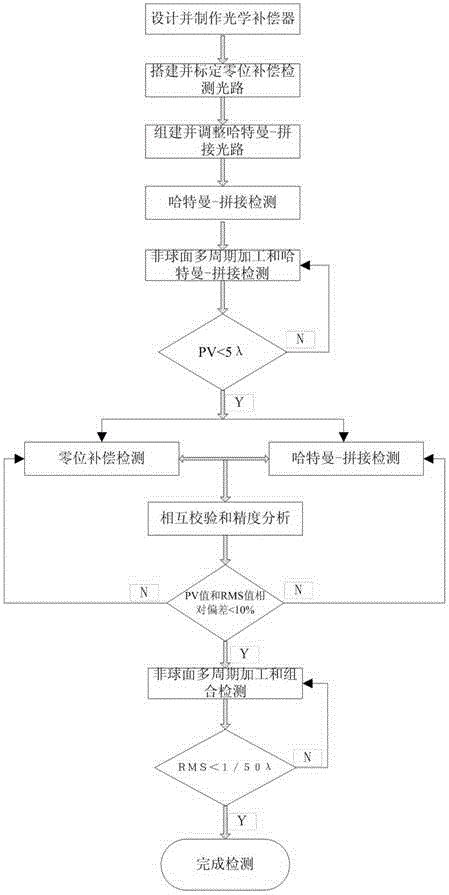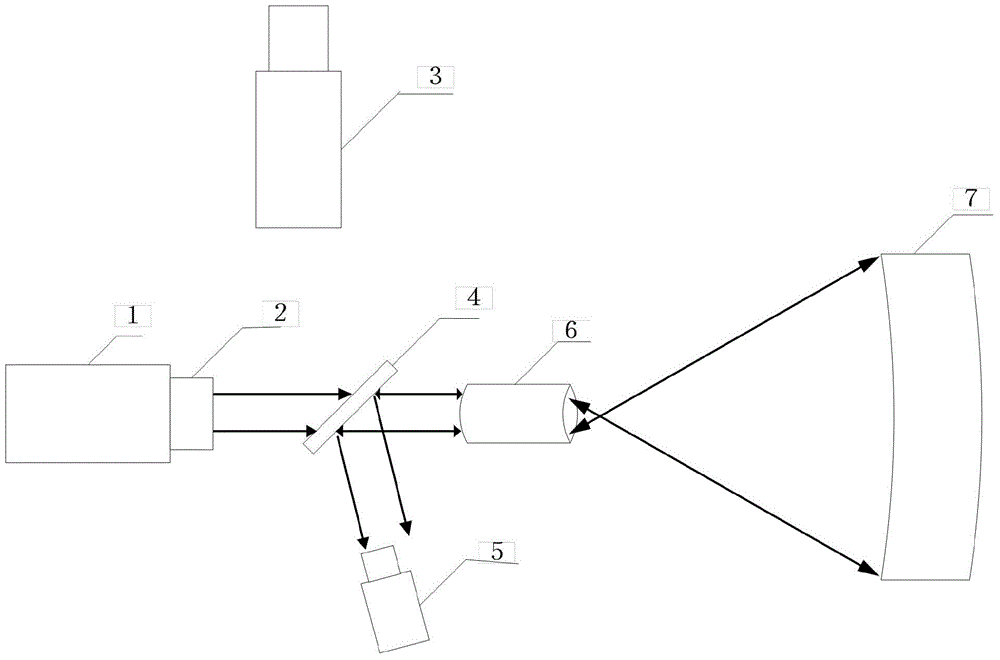Composite detection method for large-diameter non-spherical reflector with large deviation in polishing process
A composite detection, aspheric technology, applied in the field of space optics, can solve problems such as missing interference fringes
- Summary
- Abstract
- Description
- Claims
- Application Information
AI Technical Summary
Problems solved by technology
Method used
Image
Examples
Embodiment Construction
[0039] The present invention will be described in further detail below in conjunction with the accompanying drawings.
[0040] The method of the invention is carried out in the process of polishing the aspheric mirror after grinding.
[0041] Using computer-controlled small grinding head technology (CCOS) to perform deterministic processing of large-diameter and large-offset aspheric surfaces, during which the surface shape is measured by a profiler or a three-coordinate measuring instrument, and the PV value of the surface shape is obtained after detection. When the (Peak to valley value) is better than 3 μm, polish it.
[0042] Such as figure 2 As shown, the compound detection method in the polishing process of the large-caliber large-deviation aspheric mirror of the present invention comprises the following steps:
[0043] 1. Design and make optical compensator
[0044] Design and manufacture the optical compensator 6 according to the optical parameters (vertex curvatur...
PUM
 Login to View More
Login to View More Abstract
Description
Claims
Application Information
 Login to View More
Login to View More - R&D
- Intellectual Property
- Life Sciences
- Materials
- Tech Scout
- Unparalleled Data Quality
- Higher Quality Content
- 60% Fewer Hallucinations
Browse by: Latest US Patents, China's latest patents, Technical Efficacy Thesaurus, Application Domain, Technology Topic, Popular Technical Reports.
© 2025 PatSnap. All rights reserved.Legal|Privacy policy|Modern Slavery Act Transparency Statement|Sitemap|About US| Contact US: help@patsnap.com



